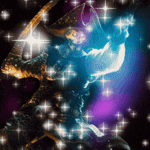
@ sperry
2023-09-26 17:44:57
If you have ever been out in Park City, UT at 10pm, you've probably heard the Fire Bell aka The 10 o'clock whistle. Heard throughout town at 10pm every night, without fail, can surprise even locals who can be caught off-guard, by the sound.
Early in the morning on June 19, 1898 a fire began in the kitchen of the American Hotel and ripped down Main Street, through the Park City commercial district, fanned by winds sweeping down the canyon. It did not stop until it ran out of fuel, destroying some 200 business and homes. Losses were estimated at over $1,000,000 (approximately $37,000,000 in 2023). The fire destroyed Main Street, Swede Alley and Park Avenue.
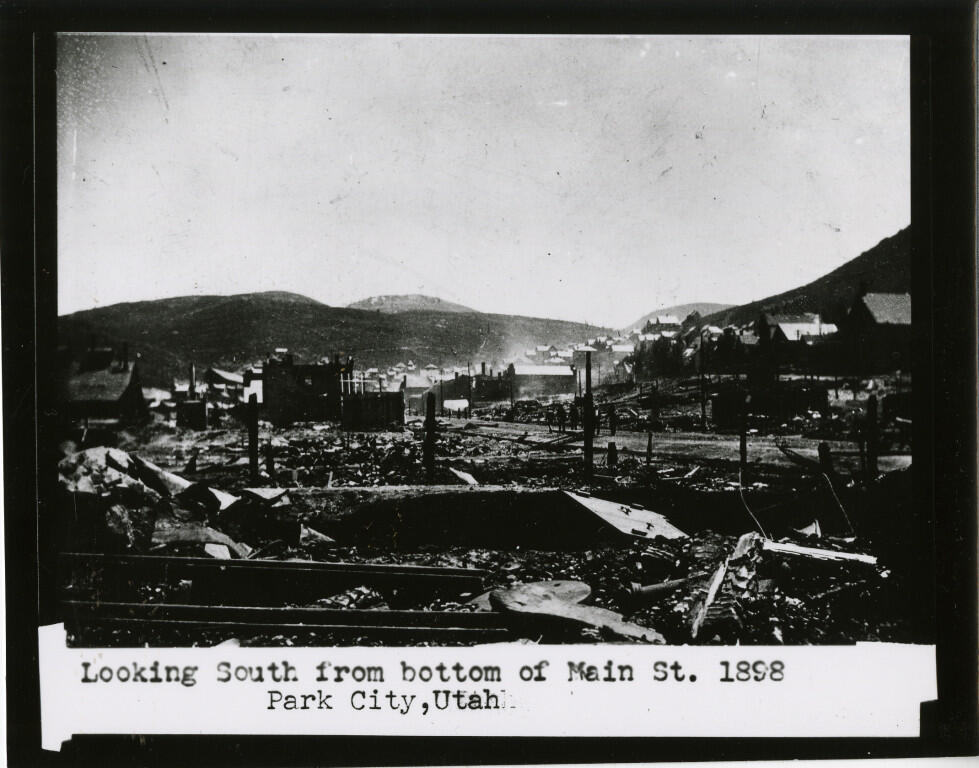
The blaze was the greatest in Utah history. There were no deaths, but 500 people were left homeless, the new city hall and opera house were destroyed.
The Salt Lake Herald, suggested, without much evidence, that the fire had been started by someone using coal oil to light the kitchen stove. The hotel owner, however, said it was possible a drunken hotel guest had kicked over an oil lamp.
The fire swept down the street, consuming building after building. It gutted the Grand Opera House, an elegant three-story brick building designed by Salt Lake City architect J.A Headlund that had been open only about a year. It took out John Funk's barber shop, the Bates & Kimball Drugstore, and the Judge, Ivers and Keith stables, which housed over 100 horses. "Horses were whinnying, men shouting, whistles screeching," the Salt Lake Tribune reported. "The spectacle as the first shafts of approaching day shot athwart the eastern hills was appalling." The stable lost all its harnesses and ore wagons, along with forty tons of oats and eight tons of hay."
"Hundreds of men and women, worked with desperation to save their belongings," the Park Record reported, "but nearly everything that was taken into the street was quickly consumed in the fierce heat and blaze, that was driven through town with an intensity that resembled the flame from the end of a blowpipe."
George Hall, proprietor of the Park City Hotel on the west side of Main Street, also scrambled to salvage some of his family's possessions, along with furniture and bedding from the hotel, and move them to the Kimball house, a large two-story structure on lower Park Avenue.
By 5 A.M. the flames had burned through the block on the west side of Main Street, reaching Park Avenue, which was home to the city's churches and "the aristocratic portion" of Park City's population.
Residents struggled to contain the fire, using giant blasting powder, they tried to decimate buildings to prevent the spread of the fire, but the flames always jumped the gap to the next structure. It was chaos, buildings burning, buildings being exploded, fires raging. "Again and again the buildings were blown up by giant powder to create a gap over which the fire would not leap," the Salt Lake Herald reported, "but the demon only laughed at the puny effort and reached out its reddened tongue further to destroy."
Near the bottom of Park Avenue, one local resident took a stand, the town doctor, E.R. LeCompte. With a lawn hose, he defended his dwelling, while a neighbor would occasionally douse him with buckets of water. "Now and then a flame reached him, but not until he began to remove his clothes and search for a fresh suit did he learn that in the fight with the flames the tails of his coat had been burned to a crisp, that his shoulder blades were exposed and that a pair of new trousers were necessary to prevent an arrest for undue exposure."
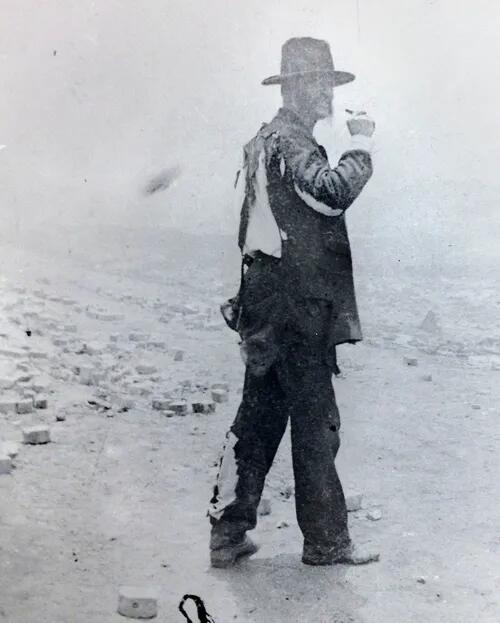
All of Park City's phone lines were ruined once the fire destroyed the First National Bank Building. The Telegraph link at the bottom of Main Street, located in the Union Pacific Depot, remained intact. 3 hours after the fire started, the Park City Fire Chief, James Berry, used the telegraph to contact fire officials in Salt Lake City and Ogden. "Send us some help to put out fire here. The city is burning," said a dispatch that arrived at the Ogden fire station shortly after 7 A.M. About an hour later, special trains left Salt Lake City and Ogden, carrying men and equipment to fight the fire. Unfortunately, by the time they arrived, there was little to do except soak down the smoldering ashes.
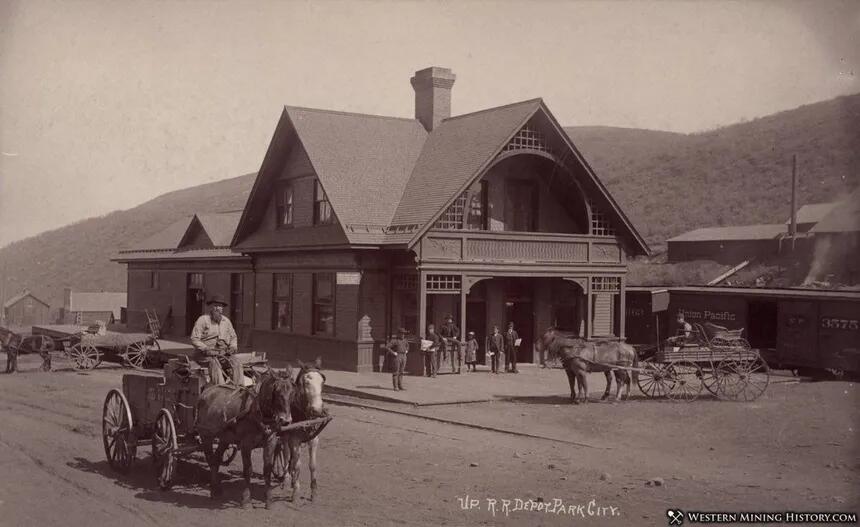
Main Street lay in ruins, with only a few gaunt walls remaining. Among the casualties were five churches, two opera houses, two bank buildings, the city hall, and numerous retail shops and saloons. One church—St. Mary's of the Assumption Catholic church—survived, thanks to its location beyond the southern perimeter of the fire.
Miraculously, no one died in the blaze. However, the flames claimed several family pets, including "Duke," a St. Bernard, that had been locked in the Bates & Kimball drugstore.
The Mayor, J.H. Deming, was called for by horseback, in the Strawberry Valley, fishing. He came as soon as he was notified, and arrived at 3am the next morning.
"The toughest job Marshal Hyde had after the fire was to shoot down [with explosives] the towering remnants of the Grand Opera House walls," the Park Record reported.
2 short days after the fire, alarm bells sounded again. The Kimball house on lower Park Avenue, where George Hall had moved everything after the destruction of the Park City Hotel, was on fire. In spite of the best efforts of firefighters, the building was destroyed.
"Everything which George saved from the burning hotel on Sunday morning was placed [in the Kimball house], and included bedding, furniture and personal effects," the Salt Lake Tribune reported on June 22. "All succumbed to flames yesterday, even to the jewelry and money which Mrs. Hall had placed in her purse for safe keeping, and the saving and work of the proprietor on Sunday last counted for naught."
With community support, however, the town rebuilt, replacing stone and brick structures with wood buildings, which were later improved again to brick and stone. The town recovered in just 18 months.
By July 2, according to the Park Record, 35 new buildings were under construction. In their haste to rebuild, most business owners erected wood-frame structures. Construction of the Record's new offices began on July 4; they were ready for occupancy only twelve days later. George Hall's new Park City Hotel was almost finished by the end of July.
In its New Year's edition in 1899, the Salt Lake Tribune reported that sixty-three buildings had been erected in the burned-out district.
Volunteer firemen built a bell tower in town in 1901. The tower housed a 1,500 pound bell that would be used to alert firefighters and residents of dangers and also provided a place to dry the fire hoses. An electric siren replaced the bell in 1948. The fire department ran a check every night at 10pm to ensure the siren worked. This daily bell soon became known as the city-wide curfew for children. Hence, the "10 o'clock whistle", which you can still hear every night, to this day.
Today, Park City, Utah, is a thriving, bustling mountain town.
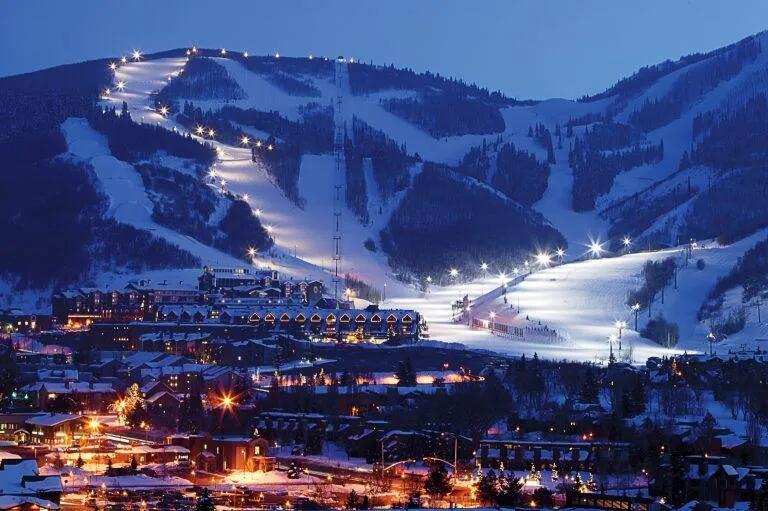
 @ sperry
2023-09-26 17:44:57If you have ever been out in Park City, UT at 10pm, you've probably heard the Fire Bell aka The 10 o'clock whistle. Heard throughout town at 10pm every night, without fail, can surprise even locals who can be caught off-guard, by the sound. Early in the morning on June 19, 1898 a fire began in the kitchen of the American Hotel and ripped down Main Street, through the Park City commercial district, fanned by winds sweeping down the canyon. It did not stop until it ran out of fuel, destroying some 200 business and homes. Losses were estimated at over $1,000,000 (approximately $37,000,000 in 2023). The fire destroyed Main Street, Swede Alley and Park Avenue.  The blaze was the greatest in Utah history. There were no deaths, but 500 people were left homeless, the new city hall and opera house were destroyed. The Salt Lake Herald, suggested, without much evidence, that the fire had been started by someone using coal oil to light the kitchen stove. The hotel owner, however, said it was possible a drunken hotel guest had kicked over an oil lamp. The fire swept down the street, consuming building after building. It gutted the Grand Opera House, an elegant three-story brick building designed by Salt Lake City architect J.A Headlund that had been open only about a year. It took out John Funk's barber shop, the Bates & Kimball Drugstore, and the Judge, Ivers and Keith stables, which housed over 100 horses. "Horses were whinnying, men shouting, whistles screeching," the Salt Lake Tribune reported. "The spectacle as the first shafts of approaching day shot athwart the eastern hills was appalling." The stable lost all its harnesses and ore wagons, along with forty tons of oats and eight tons of hay." "Hundreds of men and women, worked with desperation to save their belongings," the Park Record reported, "but nearly everything that was taken into the street was quickly consumed in the fierce heat and blaze, that was driven through town with an intensity that resembled the flame from the end of a blowpipe." George Hall, proprietor of the Park City Hotel on the west side of Main Street, also scrambled to salvage some of his family's possessions, along with furniture and bedding from the hotel, and move them to the Kimball house, a large two-story structure on lower Park Avenue. By 5 A.M. the flames had burned through the block on the west side of Main Street, reaching Park Avenue, which was home to the city's churches and "the aristocratic portion" of Park City's population. Residents struggled to contain the fire, using giant blasting powder, they tried to decimate buildings to prevent the spread of the fire, but the flames always jumped the gap to the next structure. It was chaos, buildings burning, buildings being exploded, fires raging. "Again and again the buildings were blown up by giant powder to create a gap over which the fire would not leap," the Salt Lake Herald reported, "but the demon only laughed at the puny effort and reached out its reddened tongue further to destroy." Near the bottom of Park Avenue, one local resident took a stand, the town doctor, E.R. LeCompte. With a lawn hose, he defended his dwelling, while a neighbor would occasionally douse him with buckets of water. "Now and then a flame reached him, but not until he began to remove his clothes and search for a fresh suit did he learn that in the fight with the flames the tails of his coat had been burned to a crisp, that his shoulder blades were exposed and that a pair of new trousers were necessary to prevent an arrest for undue exposure."  All of Park City's phone lines were ruined once the fire destroyed the First National Bank Building. The Telegraph link at the bottom of Main Street, located in the Union Pacific Depot, remained intact. 3 hours after the fire started, the Park City Fire Chief, James Berry, used the telegraph to contact fire officials in Salt Lake City and Ogden. "Send us some help to put out fire here. The city is burning," said a dispatch that arrived at the Ogden fire station shortly after 7 A.M. About an hour later, special trains left Salt Lake City and Ogden, carrying men and equipment to fight the fire. Unfortunately, by the time they arrived, there was little to do except soak down the smoldering ashes.  Main Street lay in ruins, with only a few gaunt walls remaining. Among the casualties were five churches, two opera houses, two bank buildings, the city hall, and numerous retail shops and saloons. One church—St. Mary's of the Assumption Catholic church—survived, thanks to its location beyond the southern perimeter of the fire. Miraculously, no one died in the blaze. However, the flames claimed several family pets, including "Duke," a St. Bernard, that had been locked in the Bates & Kimball drugstore. The Mayor, J.H. Deming, was called for by horseback, in the Strawberry Valley, fishing. He came as soon as he was notified, and arrived at 3am the next morning. "The toughest job Marshal Hyde had after the fire was to shoot down [with explosives] the towering remnants of the Grand Opera House walls," the Park Record reported. 2 short days after the fire, alarm bells sounded again. The Kimball house on lower Park Avenue, where George Hall had moved everything after the destruction of the Park City Hotel, was on fire. In spite of the best efforts of firefighters, the building was destroyed. "Everything which George saved from the burning hotel on Sunday morning was placed [in the Kimball house], and included bedding, furniture and personal effects," the Salt Lake Tribune reported on June 22. "All succumbed to flames yesterday, even to the jewelry and money which Mrs. Hall had placed in her purse for safe keeping, and the saving and work of the proprietor on Sunday last counted for naught." With community support, however, the town rebuilt, replacing stone and brick structures with wood buildings, which were later improved again to brick and stone. The town recovered in just 18 months. By July 2, according to the Park Record, 35 new buildings were under construction. In their haste to rebuild, most business owners erected wood-frame structures. Construction of the Record's new offices began on July 4; they were ready for occupancy only twelve days later. George Hall's new Park City Hotel was almost finished by the end of July. In its New Year's edition in 1899, the Salt Lake Tribune reported that sixty-three buildings had been erected in the burned-out district. Volunteer firemen built a bell tower in town in 1901. The tower housed a 1,500 pound bell that would be used to alert firefighters and residents of dangers and also provided a place to dry the fire hoses. An electric siren replaced the bell in 1948. The fire department ran a check every night at 10pm to ensure the siren worked. This daily bell soon became known as the city-wide curfew for children. Hence, the "10 o'clock whistle", which you can still hear every night, to this day. Today, Park City, Utah, is a thriving, bustling mountain town. 
@ sperry
2023-09-26 17:44:57If you have ever been out in Park City, UT at 10pm, you've probably heard the Fire Bell aka The 10 o'clock whistle. Heard throughout town at 10pm every night, without fail, can surprise even locals who can be caught off-guard, by the sound. Early in the morning on June 19, 1898 a fire began in the kitchen of the American Hotel and ripped down Main Street, through the Park City commercial district, fanned by winds sweeping down the canyon. It did not stop until it ran out of fuel, destroying some 200 business and homes. Losses were estimated at over $1,000,000 (approximately $37,000,000 in 2023). The fire destroyed Main Street, Swede Alley and Park Avenue.  The blaze was the greatest in Utah history. There were no deaths, but 500 people were left homeless, the new city hall and opera house were destroyed. The Salt Lake Herald, suggested, without much evidence, that the fire had been started by someone using coal oil to light the kitchen stove. The hotel owner, however, said it was possible a drunken hotel guest had kicked over an oil lamp. The fire swept down the street, consuming building after building. It gutted the Grand Opera House, an elegant three-story brick building designed by Salt Lake City architect J.A Headlund that had been open only about a year. It took out John Funk's barber shop, the Bates & Kimball Drugstore, and the Judge, Ivers and Keith stables, which housed over 100 horses. "Horses were whinnying, men shouting, whistles screeching," the Salt Lake Tribune reported. "The spectacle as the first shafts of approaching day shot athwart the eastern hills was appalling." The stable lost all its harnesses and ore wagons, along with forty tons of oats and eight tons of hay." "Hundreds of men and women, worked with desperation to save their belongings," the Park Record reported, "but nearly everything that was taken into the street was quickly consumed in the fierce heat and blaze, that was driven through town with an intensity that resembled the flame from the end of a blowpipe." George Hall, proprietor of the Park City Hotel on the west side of Main Street, also scrambled to salvage some of his family's possessions, along with furniture and bedding from the hotel, and move them to the Kimball house, a large two-story structure on lower Park Avenue. By 5 A.M. the flames had burned through the block on the west side of Main Street, reaching Park Avenue, which was home to the city's churches and "the aristocratic portion" of Park City's population. Residents struggled to contain the fire, using giant blasting powder, they tried to decimate buildings to prevent the spread of the fire, but the flames always jumped the gap to the next structure. It was chaos, buildings burning, buildings being exploded, fires raging. "Again and again the buildings were blown up by giant powder to create a gap over which the fire would not leap," the Salt Lake Herald reported, "but the demon only laughed at the puny effort and reached out its reddened tongue further to destroy." Near the bottom of Park Avenue, one local resident took a stand, the town doctor, E.R. LeCompte. With a lawn hose, he defended his dwelling, while a neighbor would occasionally douse him with buckets of water. "Now and then a flame reached him, but not until he began to remove his clothes and search for a fresh suit did he learn that in the fight with the flames the tails of his coat had been burned to a crisp, that his shoulder blades were exposed and that a pair of new trousers were necessary to prevent an arrest for undue exposure."  All of Park City's phone lines were ruined once the fire destroyed the First National Bank Building. The Telegraph link at the bottom of Main Street, located in the Union Pacific Depot, remained intact. 3 hours after the fire started, the Park City Fire Chief, James Berry, used the telegraph to contact fire officials in Salt Lake City and Ogden. "Send us some help to put out fire here. The city is burning," said a dispatch that arrived at the Ogden fire station shortly after 7 A.M. About an hour later, special trains left Salt Lake City and Ogden, carrying men and equipment to fight the fire. Unfortunately, by the time they arrived, there was little to do except soak down the smoldering ashes.  Main Street lay in ruins, with only a few gaunt walls remaining. Among the casualties were five churches, two opera houses, two bank buildings, the city hall, and numerous retail shops and saloons. One church—St. Mary's of the Assumption Catholic church—survived, thanks to its location beyond the southern perimeter of the fire. Miraculously, no one died in the blaze. However, the flames claimed several family pets, including "Duke," a St. Bernard, that had been locked in the Bates & Kimball drugstore. The Mayor, J.H. Deming, was called for by horseback, in the Strawberry Valley, fishing. He came as soon as he was notified, and arrived at 3am the next morning. "The toughest job Marshal Hyde had after the fire was to shoot down [with explosives] the towering remnants of the Grand Opera House walls," the Park Record reported. 2 short days after the fire, alarm bells sounded again. The Kimball house on lower Park Avenue, where George Hall had moved everything after the destruction of the Park City Hotel, was on fire. In spite of the best efforts of firefighters, the building was destroyed. "Everything which George saved from the burning hotel on Sunday morning was placed [in the Kimball house], and included bedding, furniture and personal effects," the Salt Lake Tribune reported on June 22. "All succumbed to flames yesterday, even to the jewelry and money which Mrs. Hall had placed in her purse for safe keeping, and the saving and work of the proprietor on Sunday last counted for naught." With community support, however, the town rebuilt, replacing stone and brick structures with wood buildings, which were later improved again to brick and stone. The town recovered in just 18 months. By July 2, according to the Park Record, 35 new buildings were under construction. In their haste to rebuild, most business owners erected wood-frame structures. Construction of the Record's new offices began on July 4; they were ready for occupancy only twelve days later. George Hall's new Park City Hotel was almost finished by the end of July. In its New Year's edition in 1899, the Salt Lake Tribune reported that sixty-three buildings had been erected in the burned-out district. Volunteer firemen built a bell tower in town in 1901. The tower housed a 1,500 pound bell that would be used to alert firefighters and residents of dangers and also provided a place to dry the fire hoses. An electric siren replaced the bell in 1948. The fire department ran a check every night at 10pm to ensure the siren worked. This daily bell soon became known as the city-wide curfew for children. Hence, the "10 o'clock whistle", which you can still hear every night, to this day. Today, Park City, Utah, is a thriving, bustling mountain town. 